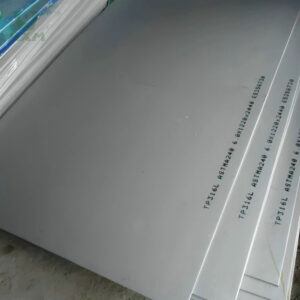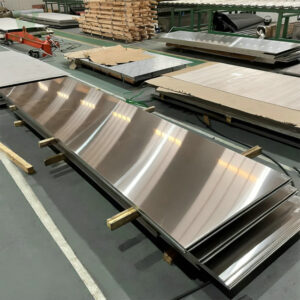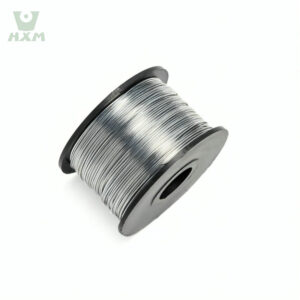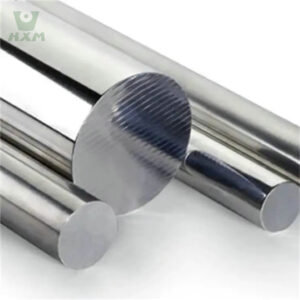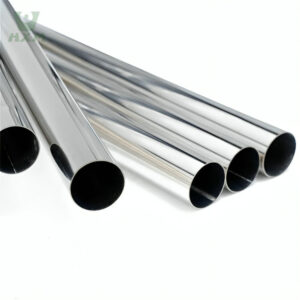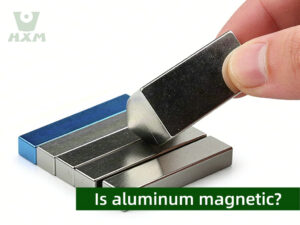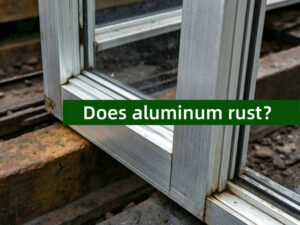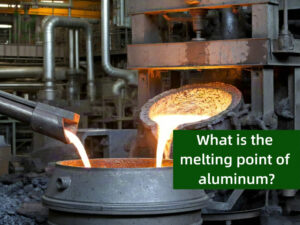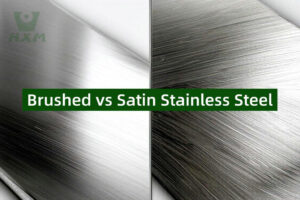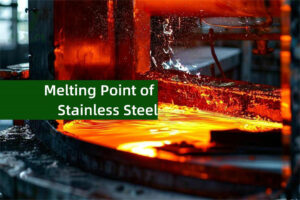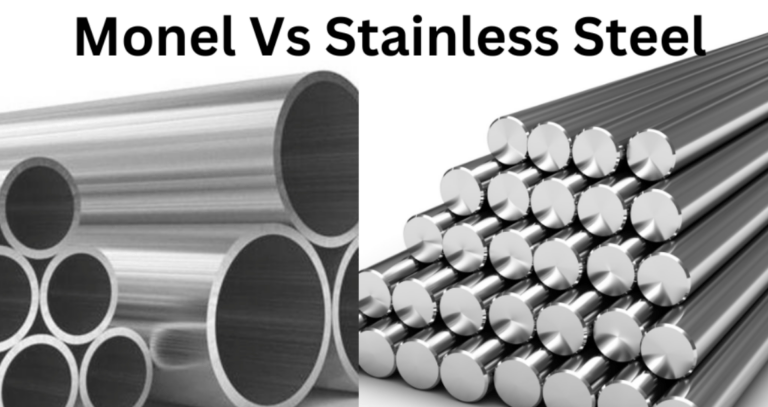
Monel and stainless steel are two widely used metals in industries requiring strength, corrosion resistance, and durability. While they share some similarities, their composition, performance, and applications differ significantly.
In this article, we will explore:
- What is Monel?
- What is Stainless Steel?
- Types of Monel and Stainless Steel
- Key Differences Between Monel and Stainless Steel
- Applications of Monel 400 and 316 Stainless Steel
What is Monel?
Monel is a nickel-copper alloy known for its exceptional corrosion resistance, especially in acidic and marine environments.
Key Characteristics of Monel:
- High resistance to saltwater corrosion.
- Excellent strength and durability.
- Superior resistance to acidic and alkaline environments.
Monel Composition
Monel typically contains:
- Nickel: 60-70%
- Copper: 20-29%
- Other Elements: Iron, manganese, carbon, and silicon.
Monel 400 Chemical Composition:
| Element | Percentage |
|---|---|
| Nickel | 63% |
| Copper | 28-34% |
| Iron | 2.5% max |
| Manganese | 2% max |
Monel Types
- Monel 400: Known for its excellent corrosion resistance in marine environments.
- Monel K500: An upgraded version of Monel 400, with added aluminum and titanium for improved strength and hardness.
Common Monel Products:
- Monel 400 bar
- Monel 400 tube
- Monel wire
- Monel pipe
What is Stainless Steel?
Stainless steel is a steel alloy containing at least 10.5% chromium, which provides its corrosion-resistant properties.
Key Characteristics of Stainless Steel:
- Corrosion resistance due to chromium oxide layer.
- Durable and easy to maintain.
- Available in a variety of grades for specific applications.
Stainless Steel Types
- Austenitic Stainless Steel (e.g., 304, 316): Highly corrosion-resistant and non-magnetic.
- Ferritic Stainless Steel (e.g., 430): Magnetic and cost-effective, used in household applications.
- Martensitic Stainless Steel (e.g., 410): High strength but less corrosion resistance.
Popular Stainless Steel Grades:
- 316 Stainless Steel: Excellent corrosion resistance, especially in saltwater.
- 304 Stainless Steel: Commonly used for general purposes.
Monel vs Stainless Steel: Key Differences
Monel vs Stainless Steel: Composition
- Monel: A nickel-copper alloy primarily composed of 63-70% nickel and 20-34% copper, with trace amounts of iron, manganese, and carbon.
- Monel 400: Standard composition with excellent corrosion resistance.
- Monel K500: Contains added aluminum and titanium for enhanced strength.
- Stainless Steel: An iron-based alloy with at least 10.5% chromium. Other elements like nickel, molybdenum, and carbon can be added to enhance specific properties.
- 316 Stainless Steel: Contains molybdenum for improved corrosion resistance.
- 304 Stainless Steel: Basic, cost-effective grade for general use.
Key Insight: Monel has a higher nickel content, making it superior for highly corrosive environments compared to stainless steel.
Monel vs Stainless Steel: Corrosion Resistance
- Monel:
- Exceptional resistance to seawater, acidic, and alkaline environments.
- Ideal for harsh conditions, such as marine and chemical processing.
- Monel 400 resists hydrochloric and sulfuric acid attacks, making it unmatched in acidic applications.
- Stainless Steel:
- Corrosion-resistant due to the chromium oxide layer that forms on the surface.
- 316 Stainless Steel: Performs well in marine environments but can pit under extreme chloride exposure.
- 304 Stainless Steel: General-purpose corrosion resistance, less effective in highly acidic conditions.
Key Insight: Monel outperforms stainless steel in acidic and marine environments, but stainless steel remains sufficient for most industrial and construction purposes.
Monel vs Stainless Steel: Mechanical Properties
| Property | Monel 400 | 316 Stainless Steel |
|---|---|---|
| Tensile Strength | 480 MPa | 515 MPa |
| Yield Strength | 170 MPa | 205 MPa |
| Hardness | 140 HB | 217 HB |
| Elongation (%) | 35% | 40% |
- Monel: Offers high strength and toughness while retaining ductility, even in subzero temperatures.
- Stainless Steel: Stronger tensile strength but may lose ductility in extreme environments compared to Monel.
Key Insight: Monel delivers superior toughness and resilience under extreme conditions, while stainless steel provides higher tensile strength for general use.
Monel vs Stainless Steel: Applications
- Monel:
- Marine Industry: Shipbuilding, seawater piping, and propeller shafts.
- Chemical Processing: Valves, tanks, and pumps handling acidic substances.
- Aerospace: Components requiring corrosion resistance and durability.
- Oil and Gas: Pipelines exposed to sour gas and seawater.
- Stainless Steel:
- Construction: Structural supports, roofing, and cladding.
- Food Processing: Kitchen equipment and storage tanks.
- Medical: Surgical tools, implants, and devices.
- Automotive: Exhaust systems and body frames.
Key Insight: Monel excels in extreme, corrosive environments, while stainless steel is preferred for its versatility, cost-efficiency, and strength.
Monel vs Stainless Steel: Cost and Availability
- Monel:
- More expensive due to its high nickel content and specialized production process.
- Typically used where performance justifies the cost (e.g., critical marine or chemical applications).
- Stainless Steel:
- More affordable and widely available.
- Cost-effective for general-purpose applications.
Key Insight: Stainless steel is the go-to choice for most projects due to its availability and lower cost, while Monel is chosen for high-performance, specialized applications.
Monel vs Stainless Steel: Weight and Density
- Monel: Higher density (8.8 g/cm³), making it heavier than stainless steel.
- Stainless Steel: Slightly lower density (7.8 g/cm³), contributing to its lighter weight for the same volume.
Summary Table: Monel vs Stainless Steel
| Criteria | Monel | Stainless Steel |
|---|---|---|
| Composition | Nickel-copper alloy | Iron-chromium alloy |
| Corrosion Resistance | Superior in acids and seawater | High, but limited in acids |
| Strength | High toughness and durability | Higher tensile strength |
| Cost | Expensive | Cost-effective |
| Weight | Heavier (higher density) | Lighter |
| Applications | Marine, aerospace, chemical | Construction, medical, food |
Conclusion: Which Should You Choose?
- Choose Monel: If your project involves highly corrosive environments (e.g., marine applications, acidic solutions).
- Choose Stainless Steel: If you need a cost-effective, versatile material for general-purpose applications like construction, food processing, and medical tools.
Applications of Monel and Stainless Steel
Monel Applications
- Marine Industry: Shipbuilding, seawater piping.
- Chemical Industry: Valves, tanks, and pumps handling acidic solutions.
- Aerospace: Aircraft components requiring high corrosion resistance.
Monel Products: Monel pipe, Monel wire, Monel K500 material.
Stainless Steel Applications
- Construction: Structural components, roofing.
- Medical: Surgical tools and implants.
- Food Industry: Food processing equipment and kitchen appliances.
Why Choose Us as Your Alloy and Stainless Steel Supplier?
At Huaxiao Alloy, we specialize in supplying high-quality Monel and stainless steel products to meet various industrial requirements.
Our Products Include:
- Monel 400 bar, tube, and wire
- Monel K500 material
- Stainless steel 316 pipes and tubes
- Custom alloy solutions
Why Choose Us?
- Extensive Product Range: From Monel tubes to stainless steel bars.
- Quality Assurance: Premium materials that meet international standards.
- Global Supply Chain: Reliable and timely delivery worldwide.
- Expert Support: Tailored solutions for your specific needs.
Conclusion
Monel and stainless steel are both excellent materials, but their differences in composition, corrosion resistance, and cost make them suitable for distinct applications. Whether you need Monel 400 for marine environments or stainless steel 316 for industrial use, choosing the right supplier is essential for project success.
Contact us today to explore our wide range of Monel alloys and stainless steel products for your business needs!
Monel is better than stainless steel in specific applications where extreme corrosion resistance is required, especially in marine and acidic environments. However, stainless steel is more versatile, cost-effective, and sufficient for most general-purpose uses like construction, food processing, and medical applications.
Monel has several advantages over stainless steel:
- Superior Corrosion Resistance: Especially in saltwater, hydrofluoric acid, and acidic environments.
- High Strength and Toughness: Maintains strength at subzero temperatures.
- Resistance to Stress Corrosion Cracking: Performs better under high-stress, corrosive conditions.
- Excellent Durability: Longer service life in harsh conditions.
Use Monel instead of stainless steel when:
- The environment involves seawater or saltwater exposure (e.g., marine components, shipbuilding).
- You need resistance to acidic or alkaline solutions (e.g., chemical processing).
- Applications involve extreme temperatures or high-stress conditions.
- Resistance to hydrochloric acid or sulfuric acid is critical.
Monel is more corrosion-resistant than stainless steel in marine and acidic environments. Monel 400, for instance, has excellent resistance to seawater and hydrofluoric acid, which can cause pitting in stainless steel, even in 316 grade.
However, stainless steel, especially 316, performs well in moderately corrosive environments and is suitable for general-purpose applications.
Monel 400 is widely used for its excellent corrosion resistance and strength in harsh environments. Typical applications include:
- Marine Industry: Seawater piping, propeller shafts, and valves.
- Chemical Industry: Pumps, tanks, and pipelines for acidic solutions.
- Aerospace: Aircraft components requiring strength and corrosion resistance.
- Oil and Gas: Pipelines for sour gas and offshore drilling platforms.
- Corrosion Resistance: Monel 400 outperforms 316 stainless steel in seawater and acidic conditions.
- Strength: Monel 400 has comparable tensile strength but offers better toughness, especially in low temperatures.
- Cost: Monel 400 is significantly more expensive than 316 stainless steel.
- Applications:
- Monel 400: Ideal for marine, chemical, and aerospace environments.
- 316 Stainless Steel: Suitable for general marine applications and industrial settings.
Monel is more expensive than stainless steel due to:
- High Nickel Content: Monel alloys contain 63-70% nickel, which is a costly material.
- Specialized Production: Monel requires more advanced processing and manufacturing methods.
- Limited Availability: Monel is less widely produced compared to stainless steel.
| Material | Common Applications |
|---|---|
| Monel | – Marine: Seawater piping, propellers, valves. |
| – Chemical: Acid-resistant tanks, pumps, and pipelines. | |
| – Aerospace: Aircraft and turbine engine components. | |
| Stainless Steel | – Construction: Structural supports, roofing, and cladding. |
| – Food Processing: Kitchen equipment, storage tanks. | |
| – Medical: Surgical tools, implants, and instruments. |
Yes, Monel can replace stainless steel in marine environments when:
- Extreme resistance to saltwater corrosion is required.
- The risk of pitting or crevice corrosion in stainless steel is unacceptable.
However, due to its higher cost, Monel is generally reserved for critical marine applications, while 316 stainless steel is sufficient for most standard marine uses.
Strength Comparison:
- Monel alloys, such as Monel K500, offer comparable tensile strength to stainless steel while maintaining superior toughness, especially in subzero temperatures.
- Stainless steel, especially grades like 316, offers higher tensile strength but may lack toughness under extreme conditions.
- Monel K500:
- Tensile Strength: 965 MPa (higher than 316).
- Yield Strength: 690 MPa.
- Excellent toughness and hardness due to added aluminum and titanium.
- Stainless Steel 316:
- Tensile Strength: 515 MPa.
- Yield Strength: 205 MPa.
- Good strength but less than Monel K500.

